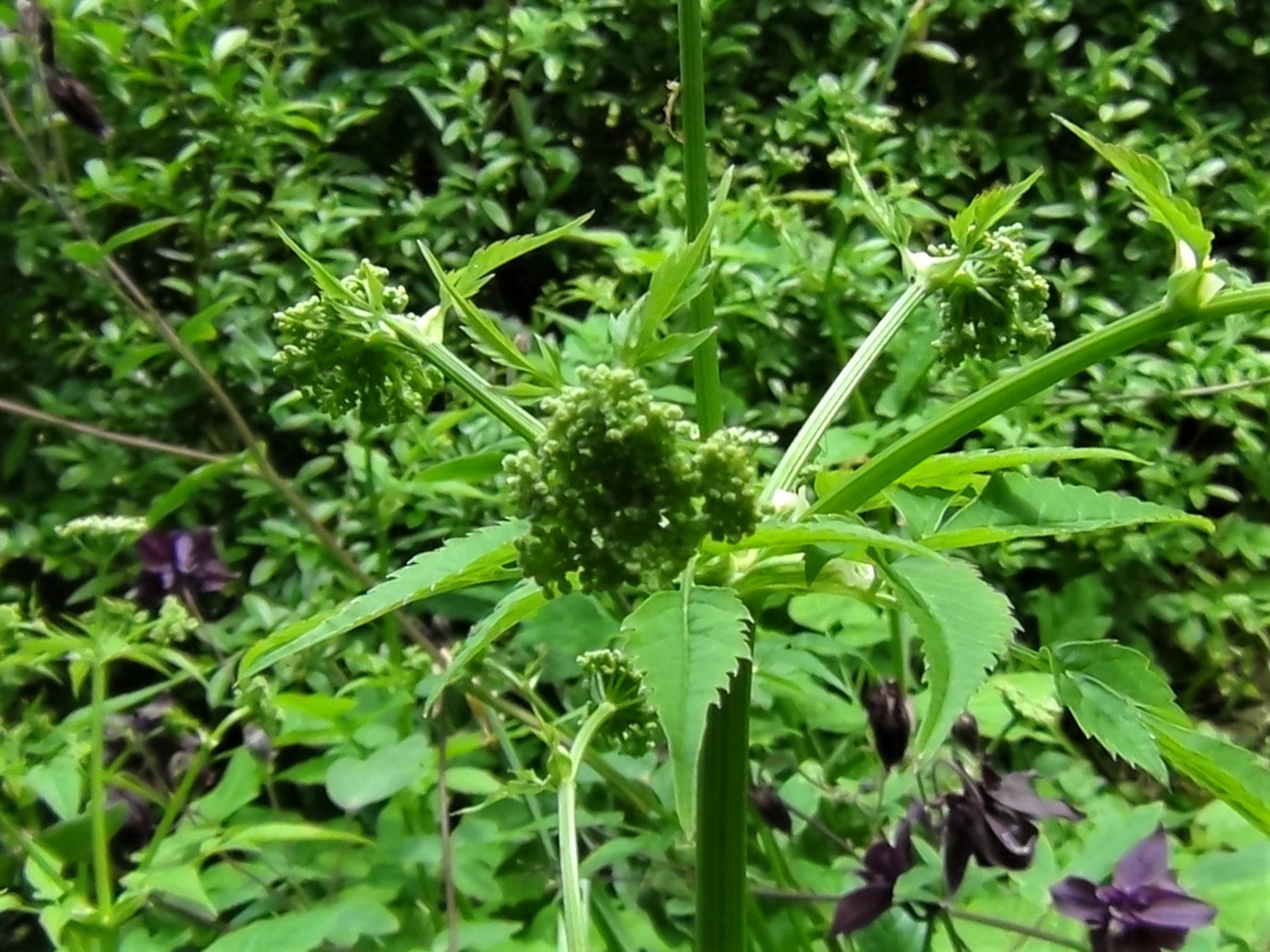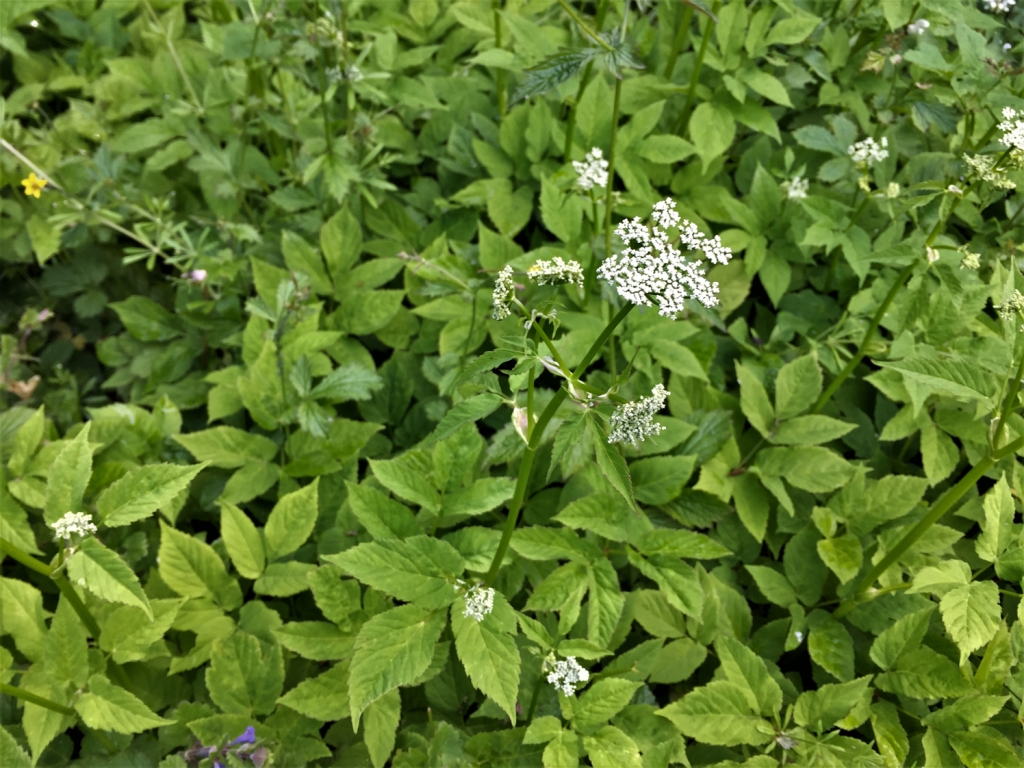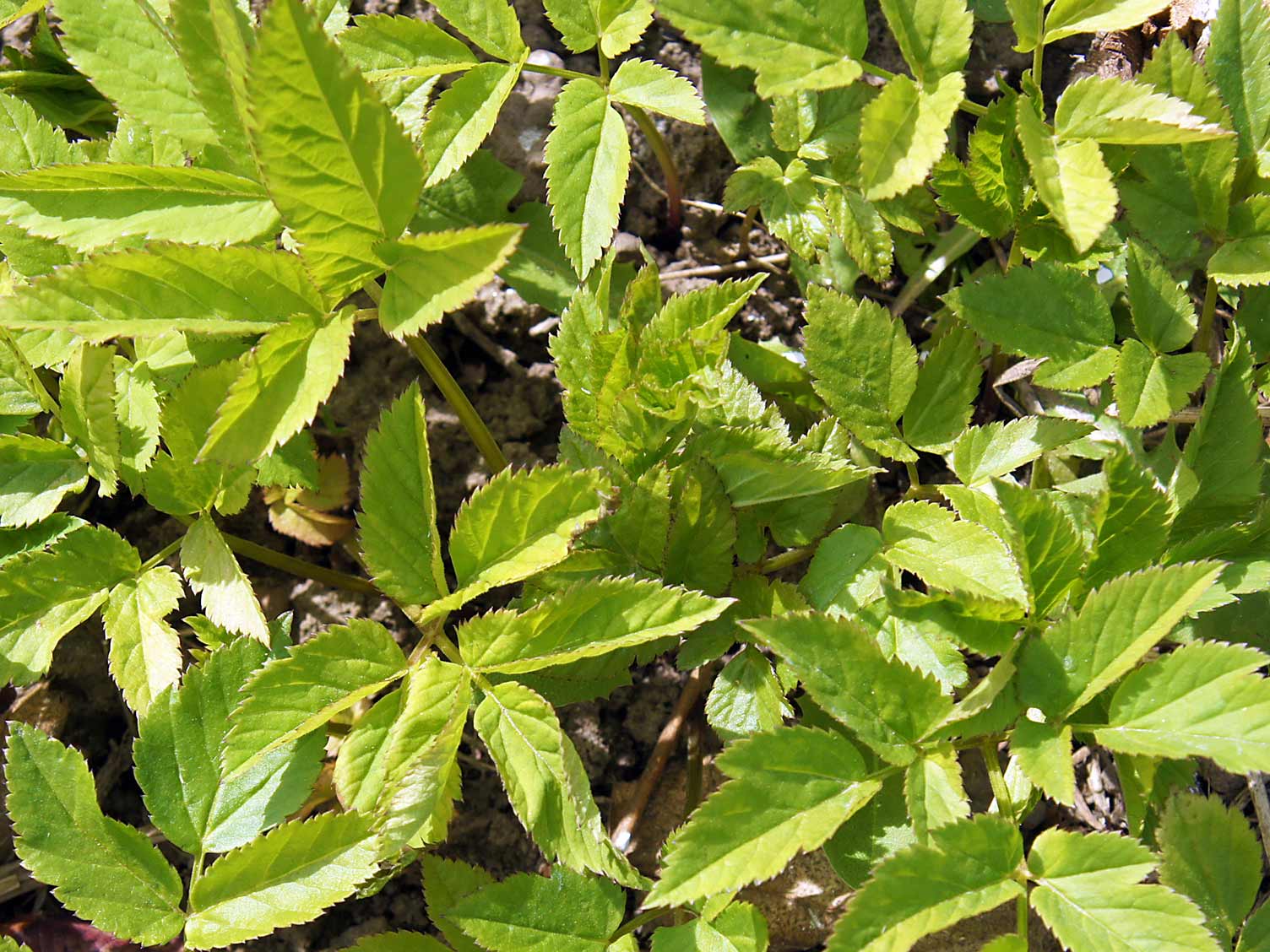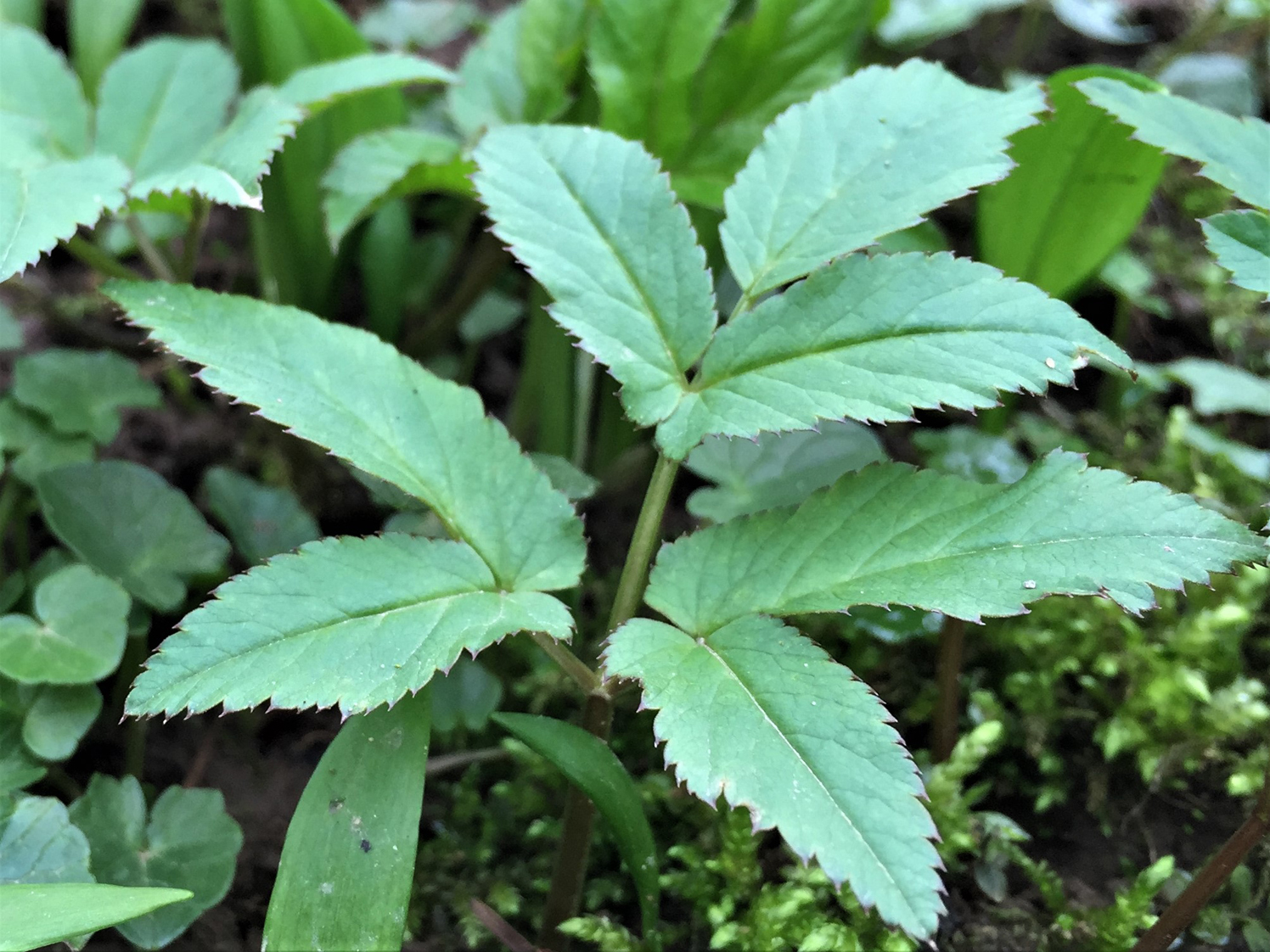What is Ground Elder and Why is it a Problem?
Ground elder (Aegopodium podagraria) is a perennial plant species native to Europe and Asia. It has been introduced to other parts of the world as an ornamental plant, but has since become a notorious invasive species in many gardens. Ground elder is characterized by its umbrella-like leaves, hollow stems, and small white flowers that bloom in late spring. It thrives in moist, shaded areas and can quickly spread through underground rhizomes, forming dense colonies that crowd out desired plants.
One of the main reasons ground elder is considered a problem is its ability to outcompete other plants for resources such as light, water, and nutrients. Its invasive nature makes it difficult to eradicate, and it can quickly take over entire gardens if left unchecked. Additionally, ground elder’s rhizomes can grow up to 3 feet deep, making it challenging to remove the plant completely. This has led many gardeners to wonder, “Is ground elder a weed?” While it may not fit the traditional definition of a weed, its invasive behavior and ability to harm desired plants make it a weed in the eyes of many gardeners.
Ground elder’s invasive nature is not limited to its ability to spread quickly. It also has a number of adaptations that allow it to thrive in a variety of environments. For example, its leaves are able to photosynthesize at low light levels, allowing it to grow in shaded areas where other plants might struggle. Its rhizomes also allow it to store energy and nutrients, making it more resilient to drought and other environmental stresses.
Despite its reputation as a nuisance, ground elder has been used for centuries in traditional medicine and as a food source. Its leaves and stems can be used in salads, and its roots have been used to treat a variety of ailments, including arthritis and digestive problems. However, its use as a medicinal plant is largely limited to its native range, and it is not commonly used in modern medicine.
In summary, ground elder is a highly invasive plant species that can quickly take over gardens and crowd out desired plants. Its ability to outcompete other plants for resources, combined with its adaptations that allow it to thrive in a variety of environments, make it a significant problem for gardeners. While it may have some uses as a medicinal plant, its invasive nature makes it a weed in the eyes of many gardeners. Understanding the characteristics and growth habits of ground elder is essential for managing its spread and preventing it from taking over your garden.
How to Recognize Ground Elder in Your Garden
Ground elder can be a challenging plant to identify, especially for inexperienced gardeners. However, by knowing what to look for, you can accurately identify ground elder and take steps to manage its growth. Here are some key characteristics to look for:
Leaves: Ground elder has triangular or heart-shaped leaves that are typically 2-5 inches long. The leaves are arranged oppositely on the stem and have a pointed tip. They are also slightly serrated, with a few teeth along the edges.
Stems: Ground elder stems are hollow, green, and slightly ribbed. They can grow up to 3 feet tall and have a distinctive “umbrella-like” shape, with the leaves arranged in a circular pattern around the stem.
Flowers: Ground elder produces small, white flowers in late spring. The flowers are arranged in clusters at the top of the stem and are relatively inconspicuous.
Roots: Ground elder has a network of underground rhizomes that allow it to spread quickly. The rhizomes are white or light brown and can grow up to 3 feet deep.
To distinguish ground elder from similar-looking plants, look for the following characteristics:
Wild garlic (Allium ursinum) has broader, more elliptical leaves and a stronger onion-like scent.
Wild ginger (Asarum canadense) has heart-shaped leaves with a more rounded tip and a distinctive ginger-like scent.
Creeping thyme (Thymus serpyllum) has tiny, oval-shaped leaves and a more sprawling growth habit.
It’s also important to note that ground elder can be mistaken for other plants at different stages of growth. For example, young ground elder plants may be mistaken for wild garlic or wild ginger, while mature plants may be mistaken for creeping thyme or other low-growing perennials.
To avoid mistakenly removing desirable plants, make sure to positively identify ground elder before attempting to control or eradicate it. If you’re still unsure, consult with a gardening expert or take a sample of the plant to a local nursery or gardening store for identification.
Is Ground Elder a Weed? Understanding its Classification
The term “weed” is often used to describe plants that are unwanted or invasive in a particular environment. But what exactly is a weed, and how does ground elder fit into this classification?
A weed is typically defined as a plant that grows in a particular location where it is not wanted, and that can outcompete other plants for resources such as light, water, and nutrients. Weeds can be native or non-native to an area, and can cause a range of problems for gardeners, farmers, and ecosystems.
Ground elder is often considered a weed because of its invasive nature and ability to outcompete other plants. It can spread quickly through underground rhizomes, forming dense colonies that crowd out desired plants. Its ability to thrive in shaded areas and tolerate a range of soil conditions makes it a formidable competitor in many gardens.
However, the question of whether ground elder is a weed is not always clear-cut. Some gardeners may view it as a desirable plant, particularly in shaded areas where other plants struggle to grow. Its edible leaves and stems can also make it a valuable addition to some gardens.
Despite its potential benefits, ground elder’s invasive nature and ability to outcompete other plants make it a weed in the eyes of many gardeners. Its ability to spread quickly and form dense colonies can cause problems for gardeners who are trying to maintain a balanced and diverse ecosystem.
So, is ground elder a weed? The answer depends on the context and the gardener’s perspective. While it may have some desirable qualities, its invasive nature and ability to outcompete other plants make it a weed in many gardens. Understanding its classification and behavior is essential for managing its growth and preventing it from becoming a problem.
It’s worth noting that the term “weed” is often subjective and can vary depending on the context and the gardener’s goals. What one person considers a weed, another person may view as a desirable plant. Ultimately, the decision of whether or not to consider ground elder a weed depends on the individual gardener’s needs and priorities.
The History of Ground Elder and its Uses
Ground elder has a long and varied history, dating back to ancient times. Native to Europe and Asia, it was once valued for its medicinal and culinary properties. The plant was used by ancient Greeks and Romans to treat a range of ailments, including arthritis, gout, and digestive problems.
In medieval Europe, ground elder was used as a food source, particularly in times of scarcity. The leaves and stems were eaten raw or cooked, and were said to have a flavor similar to celery. The plant was also used in traditional medicine, where it was valued for its anti-inflammatory and antiseptic properties.
Ground elder was also used in traditional folk medicine, where it was believed to have a range of health benefits. The plant was said to be able to treat everything from fever and rheumatism to skin conditions and digestive problems. While some of these claims may be exaggerated, ground elder does contain a range of bioactive compounds that have been shown to have medicinal properties.
Despite its long history of use, ground elder’s perception has changed over time. In modern times, the plant is often viewed as a weed, rather than a valuable resource. This is largely due to its invasive nature, which can make it difficult to control and eradicate. However, ground elder’s medicinal and culinary properties are still valued by some, and the plant is still used in traditional medicine and cooking in some parts of the world.
Interestingly, ground elder’s history is also tied to its use as a companion plant. In the past, the plant was often grown alongside other crops, where it was believed to have a beneficial effect on their growth and health. This is due to ground elder’s ability to repel pests and attract beneficial insects, making it a valuable addition to many gardens.
Today, ground elder is still used in some gardens, where it is valued for its medicinal and culinary properties. However, its invasive nature means that it must be carefully managed, to prevent it from taking over the garden. By understanding the history and uses of ground elder, gardeners can better appreciate the plant’s value, and take steps to manage its growth and prevent it from becoming a problem.
How to Control and Eradicate Ground Elder
Controlling and eradicating ground elder can be a challenging task, but it is essential to prevent it from taking over your garden. Here are some practical tips on how to manage ground elder:
Physical Removal: One of the most effective ways to control ground elder is to physically remove it from the garden. This can be done by digging up the roots and rhizomes, making sure to remove as much of the plant material as possible. It’s essential to wear gloves and protective clothing when handling ground elder, as the sap can cause skin irritation.
Mulching: Mulching can be an effective way to suppress ground elder growth. Apply a thick layer of organic mulch, such as wood chips or bark, to the affected area. This will help to block out light and prevent the plant from growing.
Herbicides: Herbicides can be used to control ground elder, but they should be used with caution. Choose a herbicide that is specifically designed to target ground elder, and follow the instructions carefully. It’s essential to take necessary precautions to avoid overspray and drift onto desirable plants.
Repeated Efforts: Eradicating ground elder requires repeated efforts over a period of time. It’s essential to monitor the area regularly and remove any new growth as soon as it appears. This will help to prevent the plant from regenerating and reduce the risk of it spreading to other areas of the garden.
Persistence is Key: Controlling and eradicating ground elder requires persistence and dedication. It’s essential to be consistent in your efforts and to monitor the area regularly to ensure that the plant does not regrow.
Combination of Methods: Using a combination of methods, such as physical removal, mulching, and herbicides, can be an effective way to control and eradicate ground elder. This will help to ensure that the plant is fully removed and reduce the risk of regrowth.
Timing is Everything: The timing of control and eradication efforts is crucial. It’s essential to remove ground elder when it is most vulnerable, such as during the spring and summer months when it is actively growing. This will help to reduce the risk of regrowth and make it easier to control.
Professional Help: If the infestation is severe or widespread, it may be necessary to seek professional help. A gardening expert or contractor can provide guidance and assistance with controlling and eradicating ground elder.
Preventing Ground Elder from Taking Over Your Garden
Preventing ground elder from becoming a problem in the first place is always the best approach. Here are some tips on how to prevent ground elder from taking over your garden:
Physical Barriers: Installing physical barriers, such as landscape fabric or plastic sheeting, can help to prevent ground elder from spreading. These barriers can be placed around the perimeter of the garden or in areas where ground elder is most likely to grow.
Improving Soil Health: Ground elder thrives in poor soil conditions, so improving soil health can help to prevent it from growing. Adding organic matter, such as compost or manure, can help to improve soil fertility and structure.
Choosing Ground Elder-Resistant Plants: Some plants are naturally resistant to ground elder, so choosing these plants can help to prevent it from growing. Examples of ground elder-resistant plants include lavender, rosemary, and thyme.
Mulching: Mulching can help to suppress ground elder growth by blocking out light and preventing it from germinating. Organic mulches, such as wood chips or bark, are best for this purpose.
Regular Maintenance: Regular maintenance, such as weeding and pruning, can help to prevent ground elder from growing. Removing weeds and debris can help to prevent ground elder from spreading, and pruning can help to control its growth.
Monitoring: Monitoring your garden regularly can help to catch ground elder growth early, making it easier to control. Keep an eye out for signs of ground elder, such as its distinctive leaves and stems, and take action as soon as you spot it.
Using Ground Covers: Ground covers, such as creeping thyme or vinca minor, can help to suppress ground elder growth by competing with it for space and resources. These plants can be used to cover large areas of the garden, making it difficult for ground elder to grow.
Creating a Balanced Ecosystem: Creating a balanced ecosystem in your garden can help to prevent ground elder from growing. This can be achieved by planting a diverse range of plants, including native species, and creating a habitat for beneficial insects and animals.
Ground Elder Lookalikes: Other Plants You Might Mistake for a Weed
Ground elder can be mistaken for other plants, particularly those with similar growth habits or appearances. Here are some plants that might be mistaken for ground elder:
Wild Garlic (Allium ursinum): Wild garlic is a perennial plant that grows in shaded areas and has a similar appearance to ground elder. However, wild garlic has a stronger onion-like scent and its leaves are more elliptical in shape.
Wild Ginger (Asarum canadense): Wild ginger is a low-growing perennial plant that has heart-shaped leaves and a similar growth habit to ground elder. However, wild ginger has a distinctive ginger-like scent and its leaves are more rounded at the tip.
Creeping Thyme (Thymus serpyllum): Creeping thyme is a low-growing, spreading plant that has tiny leaves and a similar growth habit to ground elder. However, creeping thyme has a distinctive thyme-like scent and its leaves are more oval in shape.
Wood Sorrel (Oxalis acetosella): Wood sorrel is a perennial plant that has heart-shaped leaves and a similar growth habit to ground elder. However, wood sorrel has a distinctive sour taste and its leaves are more rounded at the tip.
Proper identification is essential to avoid mistakenly removing desirable plants. If you’re unsure whether a plant is ground elder or not, consult with a gardening expert or take a sample of the plant to a local nursery or gardening store for identification.
It’s also important to note that some plants may have similar growth habits or appearances to ground elder, but are not necessarily weeds. For example, some plants may be native to your area and provide benefits to the local ecosystem.
In addition to proper identification, it’s also important to consider the overall health and balance of your garden ecosystem. By understanding the complex relationships between plants, soil, and other organisms, you can create a healthier and more balanced garden that is less susceptible to invasive species like ground elder.
Conclusion: Managing Ground Elder for a Healthier Garden
Ground elder is a plant species that can be a problem in gardens due to its invasive nature and ability to outcompete other plants. Understanding what ground elder is, how to recognize it, and how to manage it is essential for maintaining a healthy and balanced garden ecosystem.
By following the tips and advice provided in this article, gardeners can take steps to prevent ground elder from becoming a problem in the first place, and manage its growth if it does become a problem. This includes using physical barriers, improving soil health, and choosing ground elder-resistant plants.
It’s also important to properly identify ground elder and distinguish it from similar-looking plants, such as wild garlic and creeping thyme. This will help to avoid mistakenly removing desirable plants and ensure that efforts to manage ground elder are effective.
Managing ground elder requires persistence and repeated efforts, but it is possible to control its growth and prevent it from taking over the garden. By understanding the characteristics and growth habits of ground elder, and using a combination of physical removal methods, mulching, and herbicides, gardeners can keep this invasive plant under control.
Ultimately, managing ground elder is an important part of maintaining a healthy and balanced garden ecosystem. By taking steps to prevent its growth and manage its spread, gardeners can create a more diverse and resilient garden that is better able to withstand pests, diseases, and other challenges.
By following the advice and tips provided in this article, gardeners can take control of ground elder and create a healthier, more balanced garden that is free from the problems caused by this invasive plant.







